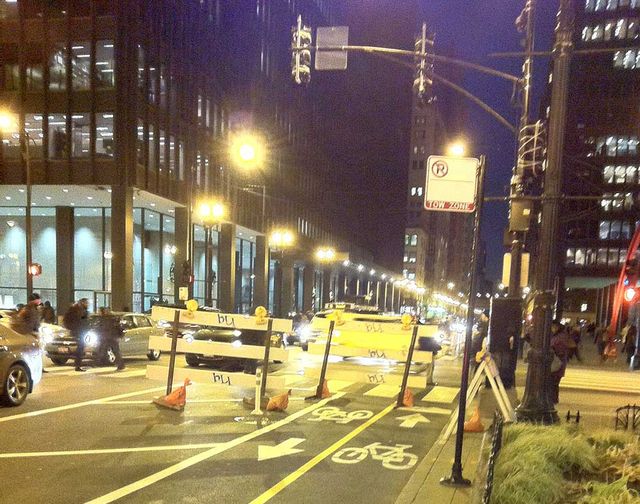
Late at night on Friday November 30, Chicago’s Department of Transportation on the city’s first protected two-way bike path with dedicated bike signals. They started on Dearborn Street in the heart of downtown, and not all motorists to the construction and loss of a lane for car traffic. Mayor didn’t budge after the complaints began. “I made a pledge that we were gonna do 25 miles of protected bike lanes throughout the city each year, so we could [reach] 100 miles by the time my term was done,” the mayor said in the . “And we’re on course to achieving that.”
Emanuel is adding the lanes in hopes that the city more . The Windy City isn’t alone in making changes favorable to bike commuters. This past Saturday, the Green Lane Project a preliminary report of protected bike lanes in the United States—they call them “.” The organization said that U.S. cities had only 62 green lanes in 2011. By the end of 2012, they predict 102 green lanes will be completed in 32 U.S. cities. said more than 80 percent of the increase comes in eight cities: Austin, Texas, Chicago, Memphis, Portland, San Francisco, Washington, D.C., and New York City. By the end of 2013, the organization predicts there will be 200 protected bike lanes in U.S. cities.
When Chicago announced its plan to build the two-way protected bike lanes downtown, it put out a with positive stats from other cities that undertook similar projects. In Washington, D.C., bike ridership increased by 40 percent with the new lanes, and cars going over the speed limit on those streets decreased from 66 percent to 26 percent. In New York City, ridership increased by 28.5 percent and reported crashes decreased by 25 percent. A study published in the American Journal of Public Health earlier this past fall showed that protected bike lanes in Toronto and Vancouver offered 90 percent less risk of a bike crash than busy streets with parked cars. Bikers, according to the study, viewed the protected lanes as safer and favored using them.
“The numbers make it very clear that if we change how the streets work, we change how people travel,” said Martha Roskowski of the Green Lane Project in a press release. “Building safe, appealing places to ride is the number one way we can encourage more people to hop on a bike. You can’t market people into feeling safe; it starts on the ground with the proper infrastructure.”
To find out whether your city has a protected bike lane planned, check out the .
—Joe Spring